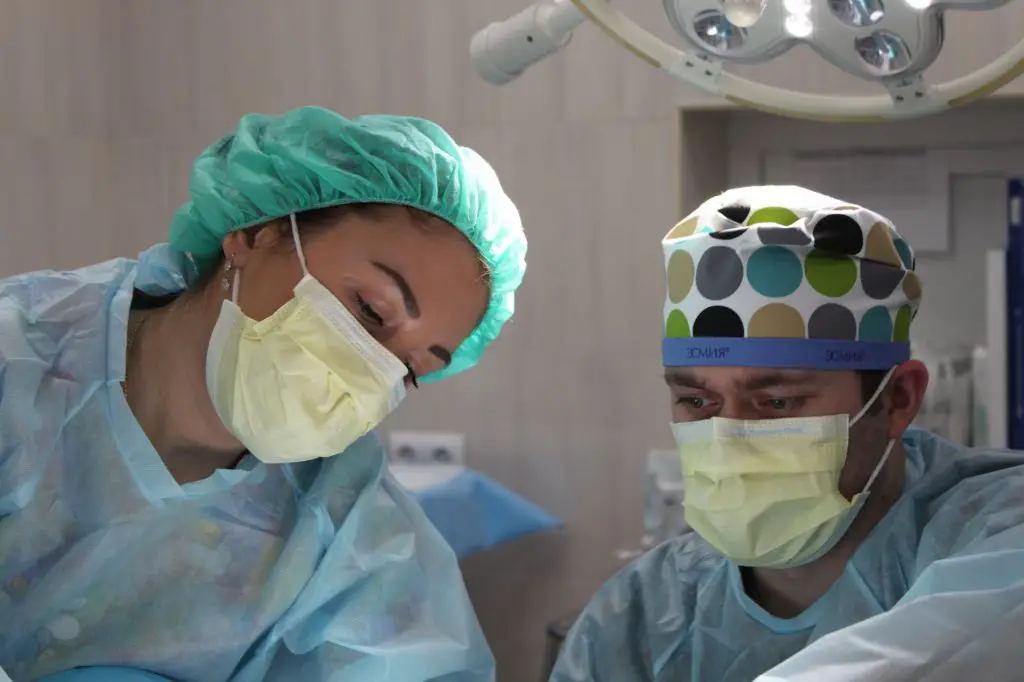The back pain are one of the most common phenomena of our century. There are different types and some are considered more dangerous than others. Moreover, diseases related to the dorsal nerves often require the performance of surgeries to relieve their symptoms. The foraminotomy is part of.
What is that ? What are the directions? How does the procedure take place ? How is the recovery going? We are talking about it.
What is foraminotomy?
Spine Anatomy
From an anatomical point of view, the spine consists of 33 vertebrae which stack on top of each other.
It is divided into 5 groups:
- cervical spine: 7 vertebrae;
- thoracic spine: 12 vertebrae;
- lumbar spine: 5 vertebrae;
- Sacrum: 5 fused vertebrae;
- Coccyx: 4 fused vertebrae.
Between two vertebrae is a intervertebral disc which will serve as a shock absorber.
To ensure the support and mobility of the back, the spine is supported by many muscles and ligaments.
Responsible for the sensory and motor innervation of the body, the spinal cord is an extension of the central nervous system. It is located inside the spinal canal formed by the juxtaposed vertebral arches.
To travel through the different parts of the body, the nerves branch out from the spinal cord and exit the spinal column through the orifices called foramenn.
What is lumbar foraminotomy?
La foraminotomy is a surgical operation used to widen the foramina of the spine. The goal is to decompress the spinal nerves and relieve pain in the lower back.
Why should a lumbar foraminotomy be done?
Doctors indicate the foraminotomy in front of the problems of narrowing of a foramen. This is a pathology called foraminal narrowing ou foraminal stenosis. It can affect any part of the spine.
The origins of this narrowing or blockage of the foramina are very varied. Among others, there are:
- degenerative arthritis that causes bone spurs (foraminal osteoarthritis);
- degeneration of the intervertebral discs which can bulge into the foramen (degenerative disc disease);
- ligament thickening;
- cysts or tumors;
- dwarfism;
- spondylolisthesis;
- Paget's disease.
When the diameter of a foramen decreases, the nerves emerging from it may be compressed and irritated. This causes pain, stiffness and feelings of numbness. And, if the nerves concerned are in direct relation with the upper or lower limbs, the latter can weaken.
What procedures are performed during a foraminotomy?
First of all, you should know that the lumbar foraminotomy is minimally invasive surgery. It is performed through a small incision which heals faster and with less scarring. With this type of intervention, the hospitalization time is also shorter. The patient recovers faster and feels less pain.
As for the course of the foraminotomy, these will be the same procedures as for “classic” surgery. The patient will lie face down and will be anesthetized. Then, the surgeon will make a small incision at the painful vertebra.
To better control the operation, the practitioner will be assisted by an X-ray and a special microscope. Then, using special tools, he will push back the muscles around the area to bring out the blocked foramen.
Then he will use small tools to remove the discomfort that is blocking the inside of the foramen. In some cases, the doctor may perform a laminectomies. This consists of removing part of the vertebra affected by the foraminal stenosis.
Once all these operations have been carried out, the muscles are put back in place, then the incision is closed.
Contraindications and risks associated with lumbar foraminotomy?
Any surgery can cause certain health risks to the patient.
With the foraminotomy, the main risks of complications are infection, bleeding, nerve damage, spinal cord damage, stroke and the risk of anesthetic reactions.
It is also possible that the operation will not be successful and the pain will persist. This factor can vary depending on the age, location, anatomy of your foramen, type of foraminotomy, and medical conditions of the patient.
How will recovery take place after a foraminotomy?
La recovery after foraminotomy may take less time than you think. Since it is a minimally invasive operation, it is often performed on an outpatient basis. The patient can go home the same day of the operation.
Depending on the case, the patient may no longer feel pain immediately. In other cases, the symptoms gradually fade.
In order for the back and the whole body to recover all its physical abilities, the doctor generally recommends doing exercises and keeping an active life. To regain flexibility, amplitude and strength in your movements, you will need to walk and practice physical exercises. It is also possible to undergo physical therapy such as kinesitherapy (ph.
Compared to daily and professional life, the patient can resume them smoothly. But for that, you will have to wait for a few weeks. You also have to avoid certain movements. And most importantly, throughout the recovery period, it is crucial to carefully follow the instructions given by the doctor.
References
https://www.bestsurgery.com/fr/minimally-invasive-spine-surgery-foraminotomy/
https://www.hopkinsmedicine.org/health/treatment-tests-and-therapies/foraminotomy


